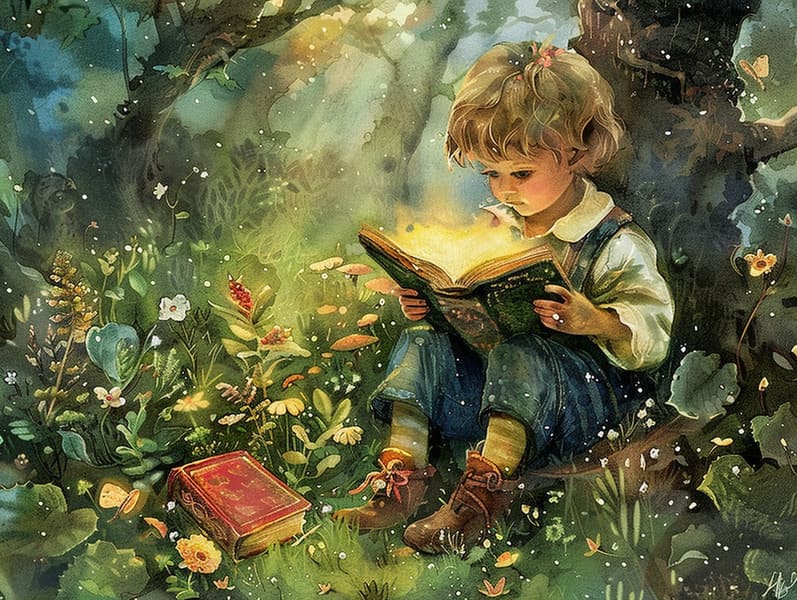The Formation of Traditional Fairy Tales with Its Unceasing Magic.
The Formation of Traditional Fairy Tales with Its Unceasing Magic.
Blog Article

Children's fairy tales have enduring presence. These narratives have been conveyed from one generation to the next millennia before they were ever put on paper. They arose from a variety of cultures, including Indigenous traditions. They were initially disseminated among mature audiences, often carrying themes and messages relevant to the societal norms and beliefs of the time.
Jacob and Wilhelm Grimm, Jacob and Wilhelm (the Grimm brothers), were among the first to compile and release many of these beloved tales. Their published works, "Grimm's Fairy Tales," included tales like "Ashenputtel," "Hansel and Grethel," and "The True Story of Snow White," which have since become essentials in the world of beloved fairy tales. Similarly, Hans Christian Andersen's charming tales, such as "The Story of the Little Mermaid," and "The Ugly Duckling," have stolen hearts worldwide, securing their place in the pantheon of timeless fairy tales.
Despite being ancient, classic fairy tales remain as relevant as ever, especially as bedtime stories for kids. These magical stories are now available in diverse formats, including richly illustrated books, enchanting animations, and digital fairy tales.
Their enduring popularity can be ascribed to several captivating elements:
Ethical Lessons: Timeless fairy tales often convey important moral lessons. Fairy tales like "The Story of the Boy Who Cried Wolf" teach the importance of honesty, while "The Story of the Tortoise and the Hare" demonstrate the values of perseverance and unpretentiousness. These narratives offer kids clear distinctions between truth and falsehood, building their moral compass in a gentle yet meaningful way.
Empathy and Awareness: Traditional fairy tales frequently present individuals facing difficulties and adversities, encouraging readers to connect with their struggles and celebrate their triumphs. For instance, "Beauty's Beast" shows us the benefit of seeing inner beauty to comprehend the true character of a person, cultivating awareness and comprehension.
Cultural Knowledge: Many ancient fairy tales are infused with the cultural contexts from which they blossomed. Learning from these fairy tales can provide informative snapshots into different social structures, advancing a sense of world respect and respect.
Creativity and Imagination: The enchanted elements in ancient fairy tales—talking beasts—invigorate children’s fantasy worlds. These fairy tales guide readers to fantastical realms, boosting fantasy ideas and a sense of magic that continues a lifetime.
Timeless fairy tales are not only entrancing but also pedagogical. They act as bewitching tools in advancing various mind and heart abilities in the young. When timeless fairy tales are recited, they foster language proficiency by showing new language and elaborate sentence structures. This practice also nurtures hearing perception and mental focus, as kids focus on every detail, ready to see what happens next.
Furthermore, examining the themes and characters of old fairy tales can foster critical thinking and cognitive skills. Young readers are educated to detect patterns, forecast, and understand cause and effect. These analyses also boost the young articulate their thoughts and feelings, cultivating their emotional intelligence.
In today’s information age, the presence of web-based fairy tales has made these fairy tales more reachable than ever. Internet resources and applications share ample collections of old fairy tales that can be read or listened to anytime, anywhere. Fairy tales recited are particularly common, presenting an enjoyable way for the young to relish these enchanting tales. Audio stories and narrated videos transport characters and settings to life, often supplemented by spellbinding sound effects and tunes that heighten the narrative adventure.
The persistent attraction of classic fairy tales lies in their ability to modify to modern society while retaining their central values. Contemporary reinterpretations of these stories often showcase more diverse figures and modern settings, making them understandable to get more info today’s audience. However, the underlying themes of fortitude, benevolence, and rightness remain unchanged, continuing to influence audiences of all ages.
Ancient fairy tales also offer a sense of warmth and homeliness. They share a organized narrative with a straightforward beginning, middle, and end, often ending with the finalization of conflicts and the triumph of truth over falsehood. This assuredness can be soothing for young readers, affording a sense of steadfastness in an constantly changing world.
Traditional fairy tales continue to spellbind and coach new generations, maintaining their magic and importance in modern society. As children's bedtime stories, they extend a perfect blend of charm and understanding, enhancing moral values, empathy, and creativity. The prevalence of online storybooks and the well-received status of fairy tales voiced secure that these old stories remain accessible to new generations.
By keeping and sharing these stories, we continue to pay tribute to the rich tapestry of creativity and cultural heritage. Whether you are exploring a artistically illustrated book, delving into a digital library, or listening to an spoken story, the attraction of bedtime fairy tales is always within reach. These fairy tales convey of the immortal presence of storytelling and its ability to unite us across epochs and places.
If you are viewing a vibrantly illustrated book, discovering a internet collection, or listening through an read-aloud book, the captivation of bedtime fairy tales is always within reach.
These narratives demonstrate of the timeless strength of storytelling and its ability to bind us across eras and regions, establishing a link that charms and informs alike.